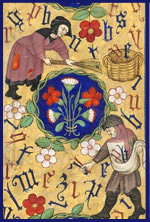Libraries at University of Nebraska-Lincoln

Copyright, Fair Use, Scholarly Communication, etc.
Document Type
Presentation
Date of this Version
7-12-2017
Citation
Used at the 2017 Nebraska ACRL Scholarly Communication Roadshow on July 12, 2017 at the University of Nebraska-Lincoln. Presenters: Will Cross, Jaron Porciello, and Elizabeth Brown.
Abstract
Excerpts from the presenters' notes:
Today’s focus – not copyright generally, or copyright for things like library digitization, but copyright in the context of scholarly publishing.
Copyright’s purpose and higher education’s purpose have a lot in common. We as a society all benefit if people can build on the discoveries that came before them, while having an incentive to create new things.
Article I, Section 8, where the authority for US copyright law comes from, reads "To promote the Progress of Science and useful Arts, by securing for limited Times to Authors and Inventors the exclusive Right to their respective Writings and Discoveries."
The first ever copyright law, the Statute of Anne (Great Britain, 1710) is formally titled "An Act for the Encouragement of Learning," (by Vesting the Copies of Printed Books in the Authors or Purchasers of such Copies, during the Times therein mentioned).
Copyright Fundamentals
Copyright attaches automatically to original works of authorship fixed in a tangible medium of expression -no registration required.
Included in
Intellectual Property Law Commons, Scholarly Communication Commons, Scholarly Publishing Commons


Comments
Copyright 2017, the authors. Licensed open access material.